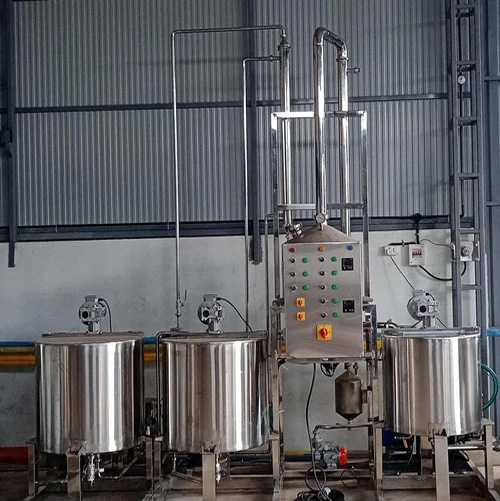
Honey Processing Plant Manufacturer
Honey processing units are facilities or equipment setups designed to extract, process, and package honey for consumption. These units can range from small-scale operations for individual beekeepers to large industrial plants that process honey on a commercial scale. The goal of a honey processing unit is to ensure that honey is pure, clean, and of high quality before it reaches consumers.
Uncapping: Honeycombs are uncapped to remove the wax layer that seals the honey in the cells. This is typically done using an uncapping knife or machine. Extraction: Honey is extracted from the honeycomb using a honey extractor, a centrifuge that spins the frames and forces the honey out of the cells.
After extraction, the honey is passed through filters or strainers to remove any remaining wax particles, bee parts, and other impurities. This step is crucial to ensure clarity and purity.
Coarse and Fine Filters: Coarse filters remove larger debris, while fine filters catch smaller particles, resulting in cleaner honey.
The filtered honey is then placed in settling tanks, where it rests for a period to allow air bubbles and finer particles to rise to the surface. These are skimmed off, leaving clear honey behind.
Some honey processing units gently heat the honey to reduce viscosity, making it easier to filter and package. However, overheating can degrade the quality of honey by destroying its natural enzymes and altering its flavor, so temperature control is crucial.
Pasteurization (Optional): In some commercial operations, honey may be pasteurized to kill yeast cells that can cause fermentation, particularly in honey with higher moisture content. However, raw honey enthusiasts prefer non-pasteurized honey to retain its natural properties.
If the moisture content of the honey is too high, it can ferment and spoil. Some processing units include dehydrators or moisture control systems to reduce the moisture content to the desired level, typically below 18%.
Some processing units may produce creamed honey, a smooth, spreadable form of honey. This involves controlling the crystallization process by seeding the honey with fine crystals and then stirring it to create a uniform texture.
Once processed, the honey is ready for packaging. This can be done in various forms, such as jars, bottles, or bulk containers, depending on the intended market.
Labeling: The packaging process includes labeling with information such as the type of honey, origin, and nutritional details. In some regions, labeling must comply with specific regulations regarding purity, organic status, or geographical indications.
Throughout the processing, honey is tested for quality parameters such as moisture content, sugar composition, and absence of contaminants. This ensures the final product meets the required standards for consumer safety and quality.
Processed honey is stored in a cool, dry place to preserve its quality before distribution. Proper storage is important to prevent crystallization or fermentation.
Honey Processing Plant Manufacturer in Rajasthan | Honey Processing Plant Machine in Jaipur | Honey Processing Machines | Best Honey Processing Machines in UdaipurYes I'm Interested

